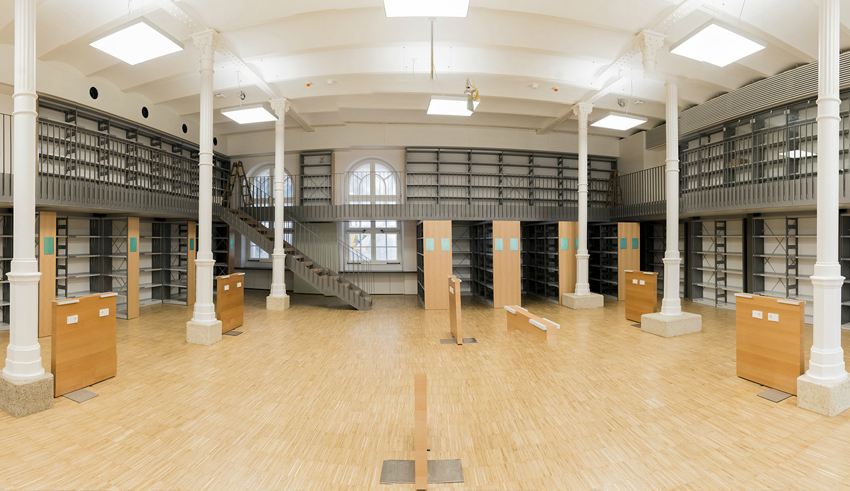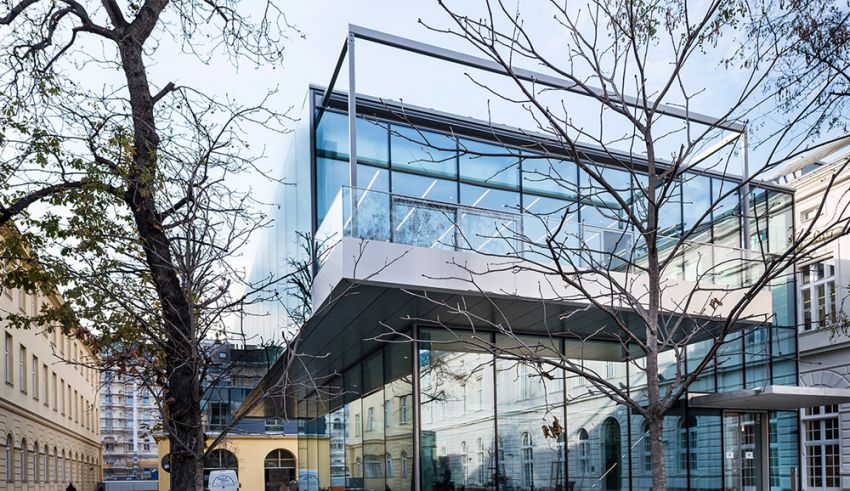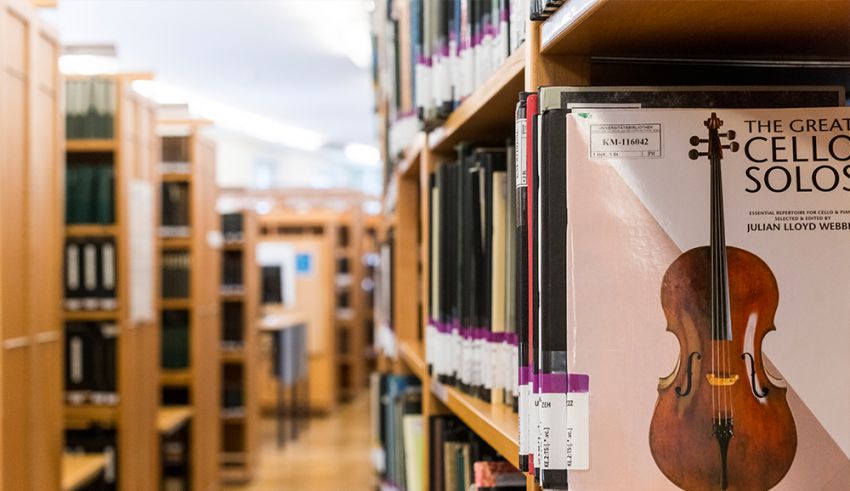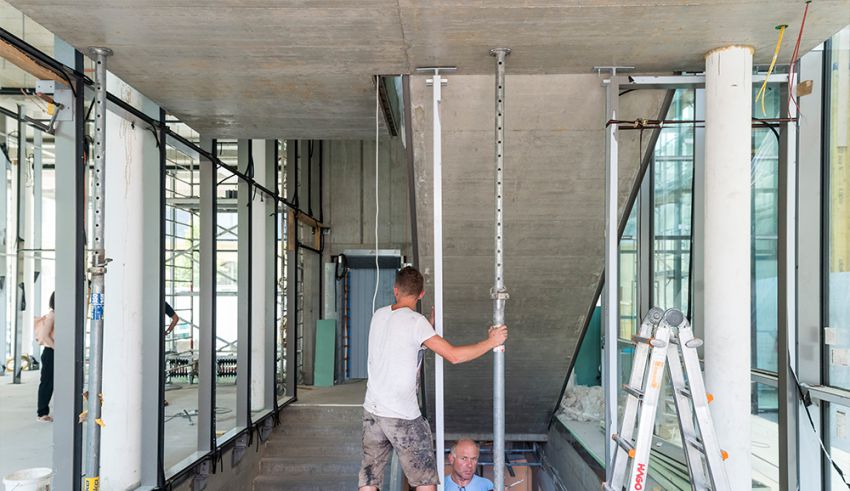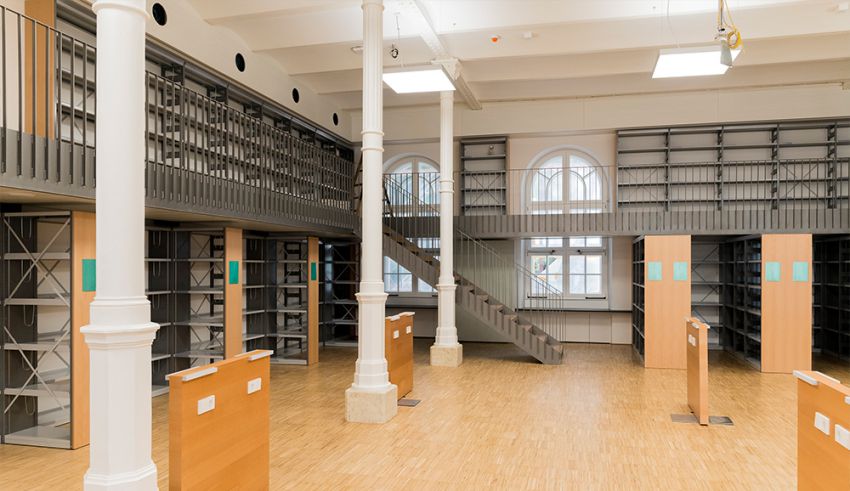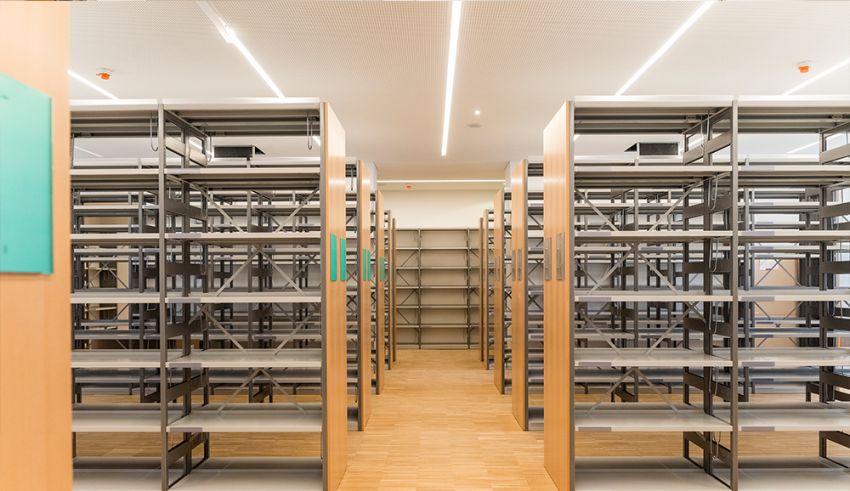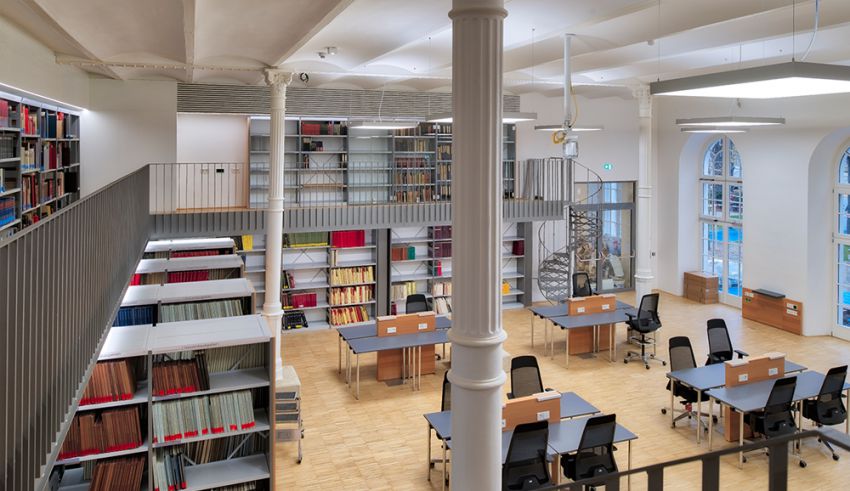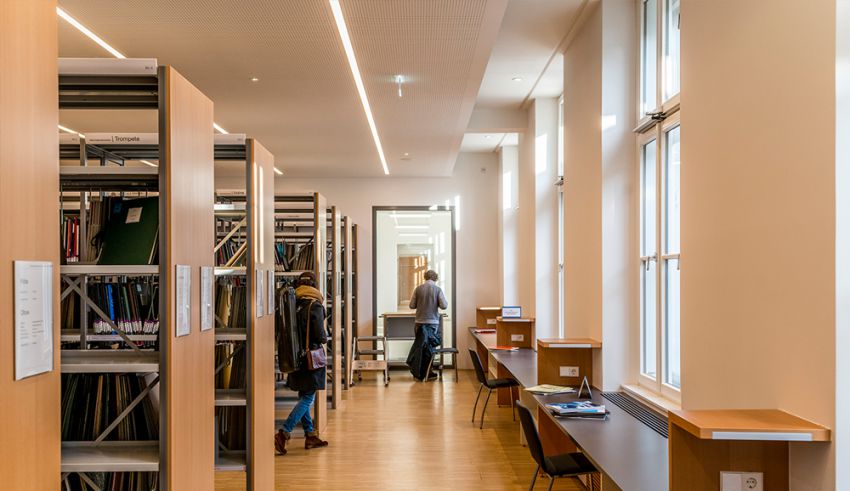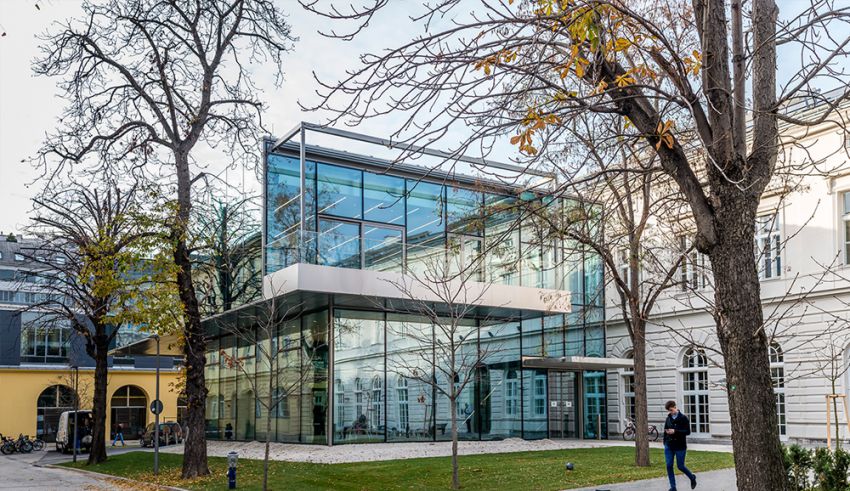This past summer, the University Library moved to its new location on the mdw campus after 103 years on Lothringerstraße. Library head Michael Staudinger talks about the logistics of such a move, the new library’s plus points for users, the future of libraries in general, and his favourite books.
What are the special things that have to be considered when you set out to move 160,000 works, some of which are unique and irreplaceable?
It’s really not that much different than moving your own home library from one apartment to another. It’s just a whole lot more books—plus, in our case, printed music. We do, of course, have very old books in our holdings, but old books don’t necessarily need special treatment during such a move—it depends on what condition they’re in. If their bindings and paper are good, then old books are actually more robust than books that were produced later on, where the paper’s wood pulp content is very high.
And a big factor in our case, unlike in private move, is that we can’t let anything get out of order. A book in the wrong place is for all practical purposes lost, unless you find it again by chance. Speaking of finding things, we’ve designed the new open-access area of our 100-year-old library to meet present-day needs, complete with a new way of physically arranging its content. And we’ve also transferred a great many volumes of printed music from the closed stacks to these open ones.
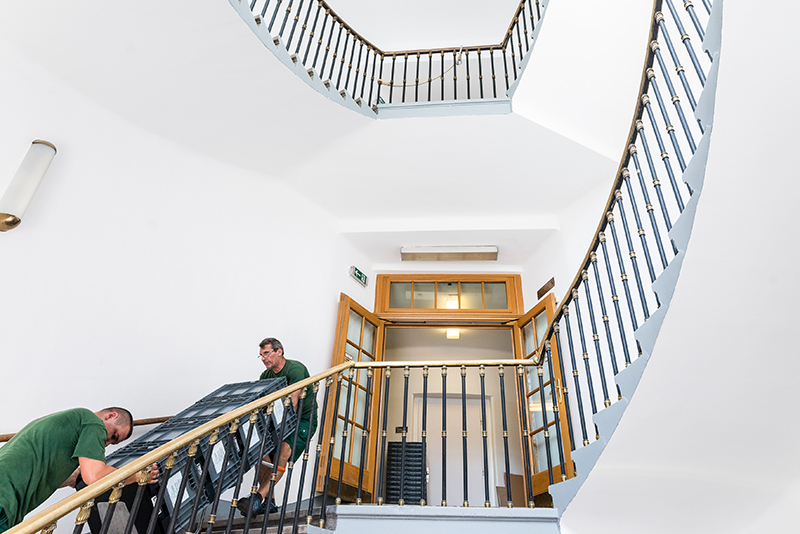
How does this new open-access area look?
In our old location, we had a bit over 15,000 volumes of printed music in the open stacks; where we are now, we’re starting out with over 30,000 volumes that you can take off the shelf yourself and borrow. Altogether, the new area has space for between 60,000 and 70,000 volumes, so these holdings will grow even larger in the years to come. Besides which, the new way they’re arranged makes it easier to find individual works.
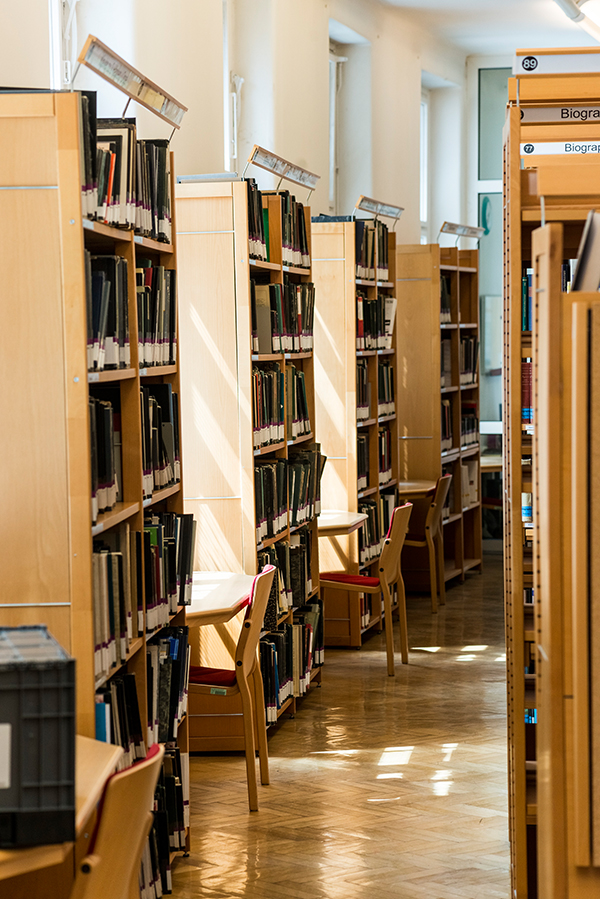
What’s new about their arrangement?
I can best explain it by talking about our chamber music area, which we now refer to as “materials for small ensembles”. This area used to be a jumble of everything from duets to nonets. So if someone wanted string quartets by Mozart, for example, he or she had to comb through several metres of shelves to find what they were after. It was a bit like getting sent into a shoe store stockroom to look for red shoes—there are thousands of shoeboxes there, and the red shoes will be somewhere in the midst of them all. So in our new location, we’ve significantly refined and expanded this section: Mozart’s string quartets are now in the “string quartets” section under “Mozart”. Furthermore, we now have a larger and more diverse body of repertoire for individual instruments in the open stacks than just the study works that were previously there, so there’s now a wide variety of pieces for each instrument.
What’s improved in terms of the library’s usability?
People generally ask quite a lot for printed music, at our library, because the availability of printed music online isn’t that great. What’s more, the music that you find online has to be printed out, and when you put it on your stand, you’ve got a stack of loose pages where the sizing might be all wrong and so on. So commercially printed material is still an important basis for music-making. And since we want to make a large amount of that available, we need to divide it into smaller bites to help people find things more quickly.
How important are libraries in general, in today’s digital world?
The digital world affects some libraries quite strongly and others far less. Scientifically oriented libraries, for example, are already making quite a bit of their literature available in electronic form. And it’s in other ways that the digital world affects institutions like the Austrian National Library: they have a mandate to collect, which also entails collecting digital materials—including pages from various Austrian websites.
Generally, I think that libraries will always be important and always be with us. Someday, much of what a library does at present in terms of information provision will perhaps be doable at home, but even so, I’m sure that the library as a venue will stay around for a long time. A library is a place that doesn’t oblige you to do anything in particular—it can be used by anyone who wants to take advantage of well-curated literature, receive well-informed advice, study, read the paper, or even just sit down in a free seat and stare into space. Nobody has to justify why they’re there. It’s as such places that, I think, we’ll always have libraries, and I also believe that the quality of such places will grow even more important in the future.
I’ll conclude with a personal question: Do you enjoy reading yourself?
I really do like to read, actually, but since I have three small children, I’m currently not able to do much reading for myself. I do, however, read a lot of children’s books with my kids.
What literature are you fond of, and what books do your children like?
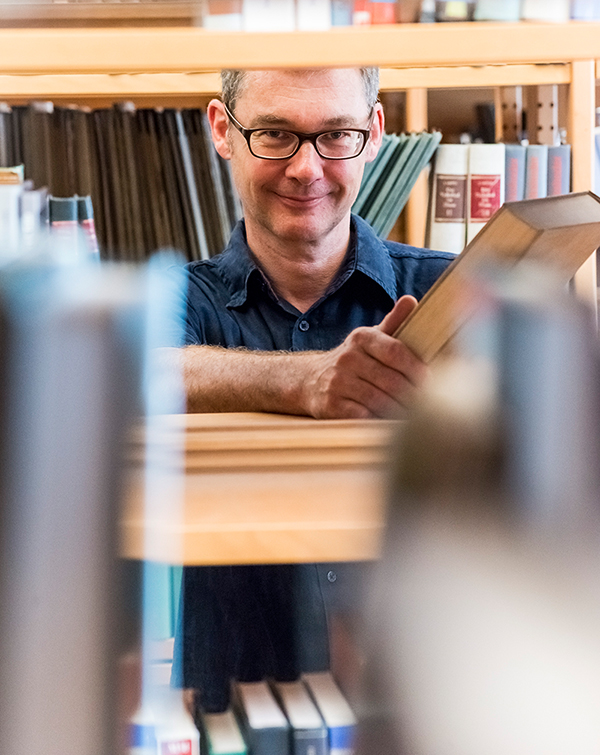
Personally, I’m really fond of Russian literature from the 19th century as well as from the Soviet era. Some favourites here include Leo Tolstoy, Fyodor M. Dostoyevsky, Mikhail Bulgakov, and Vasily Shukshin, the last of whom wrote short stories about Soviet everyday life. And with my children, I recently read The Neverending Story by Michael Ende, which is a book that I liked a lot myself when I was a kid. Even if they couldn’t yet fully understand them, they did like the stories in that book. We’ve also read books by Astrid Lindgren, like Pippi Longstocking, Emil of Lönneberga, and The Six Bullerby Children. And at the University Library, by the way, we’re currently working to compile a section containing books of music for children, which will also be available in the open-access area. The goal is to eventually have a rich selection of literature for music education students to draw on for elementary music-making and to which parents can turn when they’d like to expose their own children to music.
The new mdw library

